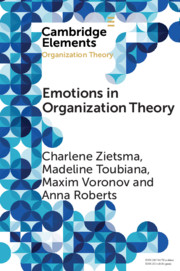Element contents
Emotions in Organization Theory
Published online by Cambridge University Press: 19 March 2019
Summary
- Type
- Element
- Information
- Series: Elements in Organization TheoryOnline ISBN: 9781108628051Publisher: Cambridge University PressPrint publication: 11 April 2019
References
- 49
- Cited by

